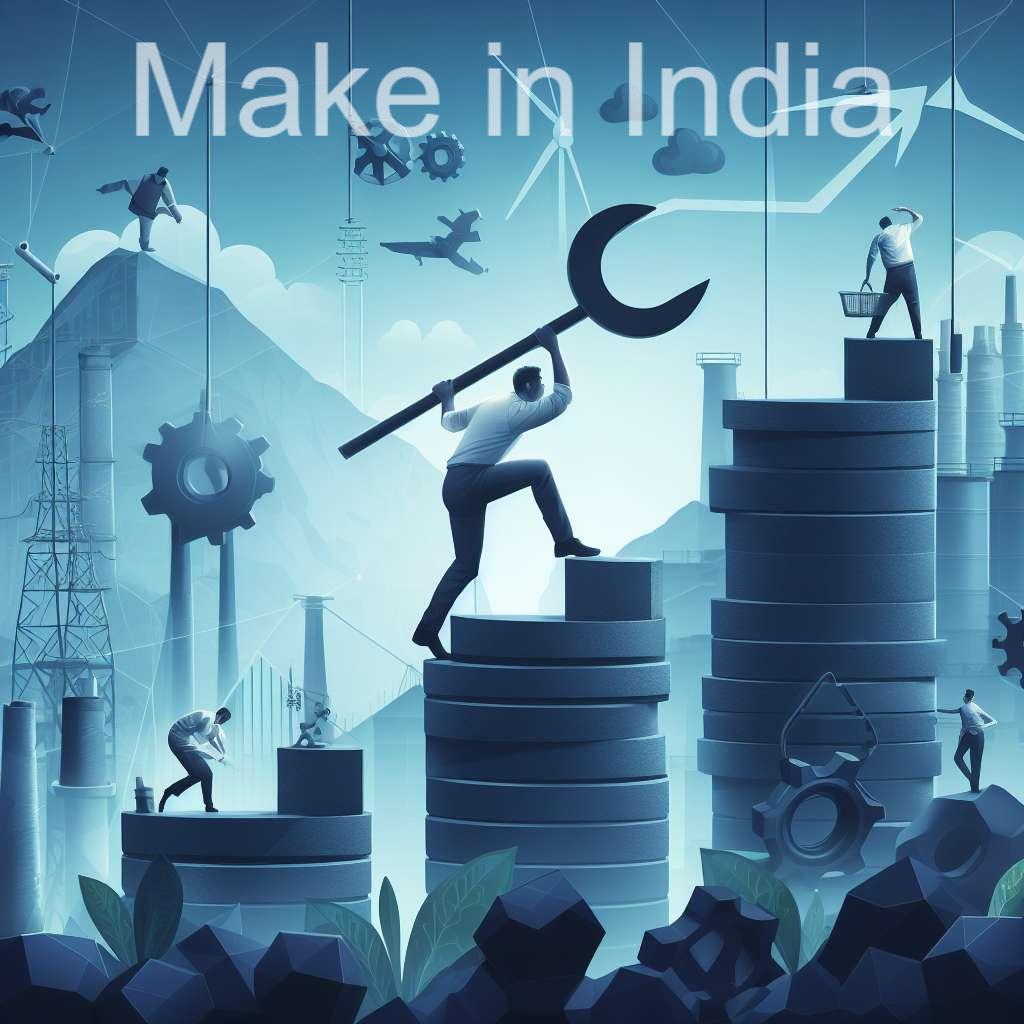While India’s manufacturing sector holds immense potential, it faces several key challenges that hinder its growth and global competitiveness. Addressing these challenges is crucial for the successful realization of initiatives like “Make in India.” Here are some of the most significant hurdles:

1. Infrastructure Bottlenecks:
- Inadequate logistics: Poor road connectivity, inefficient ports, and unreliable last-mile delivery systems lead to delays, increase costs, and disrupt supply chains.
- Power shortages: Unreliable power supply disrupts production schedules and increases operational costs for manufacturers.
- Digital infrastructure gap: Rural areas lack adequate internet connectivity and digital literacy, hindering the adoption of advanced technologies and automation in manufacturing.
2. Skill Gap and Workforce Issues:
- Misalignment between education and industry needs: Educational institutions often fall short of providing job-ready skills required by the manufacturing sector.
- High labor turnover: Frequent job switching and lack of employee loyalty can disrupt production and impact efficiency.
- Stringent labor laws: While protecting worker rights, rigid labor laws can create challenges in hiring and firing, making it difficult for companies to adjust to fluctuating demand or adopt flexible work arrangements.
3. High Costs and Bureaucracy:
- Complex regulations and compliance requirements: Navigating multiple layers of government approvals and regulations can be time-consuming and costly for manufacturers.
- High taxes and tariffs: The burden of indirect taxes and levies on raw materials, machinery, and finished goods increases the cost of production and makes Indian manufacturers less competitive globally.
- Land acquisition and environmental clearances: The process of acquiring land and obtaining environmental clearances can be slow and cumbersome, delaying project timelines and increasing costs.
4. Technological Lag and Innovation Deficit:
- Limited adoption of advanced technologies: Many Indian manufacturers still rely on outdated technologies and processes, leading to lower productivity and efficiency compared to global competitors.
- Weak R&D ecosystem: Low investment in research and development hampers innovation and the development of new, high-value products.
- Lack of collaboration between industry and academia: Limited collaboration between research institutions and manufacturers reduces the flow of knowledge and technology transfer, hindering innovation.

5. Access to Finance and Capital:
- Limited access to affordable credit: Small and medium-sized enterprises (SMEs) often face difficulty in accessing affordable loans and financing for their operations and expansion.
- Complex financial instruments: SMEs may lack the expertise to navigate complex financial instruments and risk management strategies.
- Uncertainty in policy and regulations: Frequent changes in policies and regulations can create uncertainty for investors and hinder long-term investment in the manufacturing sector.
Tackling these challenges requires a multi-pronged approach from the government, industry leaders, and educational institutions. Investment in infrastructure development, skill development programs, research and innovation, streamlining regulations, and ensuring ease of doing business are crucial steps towards creating a conducive environment for manufacturers to thrive in India. By overcoming these challenges, India can unlock the full potential of its manufacturing sector and become a global leader in this crucial industry.